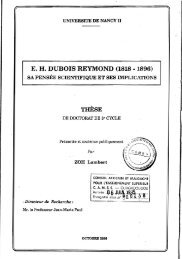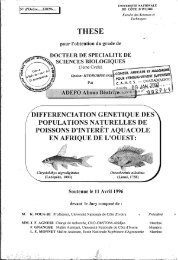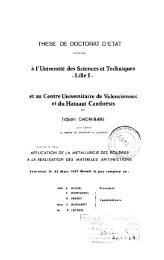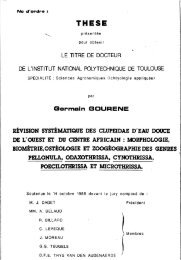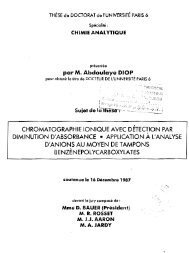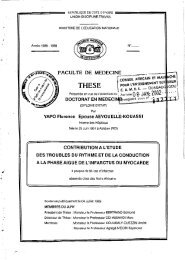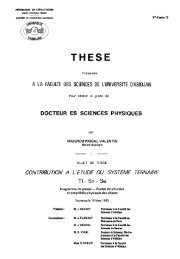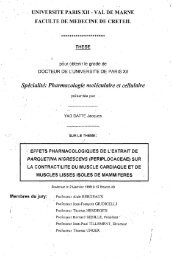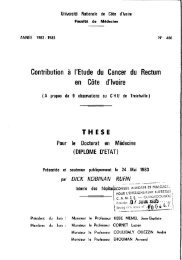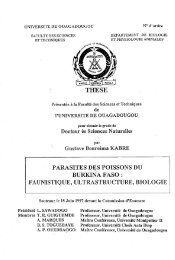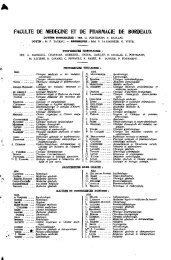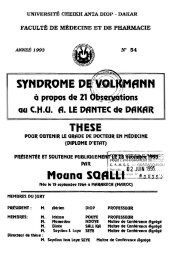THÃSE
THÃSE
THÃSE
- No tags were found...
You also want an ePaper? Increase the reach of your titles
YUMPU automatically turns print PDFs into web optimized ePapers that Google loves.
: : : : : : : : :~:: : . : : : : : :.:-120 : -60 : 0 : +5 : +15 : +30 : +45 : +60 : +75 : +90Animaux : : : : : .: : : :. : : : : : : : : :: : : : : : : :· · ·6 singes : : : : : : : : : :PRL ·impubères : : 136 : 120 : 109 : 127 : 249 : 257 : 221 : 174 : 158 : 128en mU/ml --- ---.: : : : : : : : :· ·: : : : : : : : :· ·F = 5,37 : : : : : : : . : : :5 singes :: : : : : : : : : :PRLpubères : : 145 : 128 : 104 : 173 : 320 : 308 : 279 234 : 230 : 209en mU/ml --- --- --- ·F = 5,43 : : : : : : : : : . :: : : : : : : : : : :: : : : : : : : : : :Total (lI) : : : : : : : : :· PRL ·:: 140 : 123 : 107 : 146 : 279 : 279 : 246 : 199 : 188 : 168en mU/ml --- --- ---· : : : : : : : : : :F = 10,89 : : : : : : : : : :··Tableau VII Evolution des taux sériques moyens de PRL (mU/ml)doséedans des échantillons de sang de Il singes mâles(6 impubères et 5 pubères) après administration de TRH(4,5 jUg/kg ).



